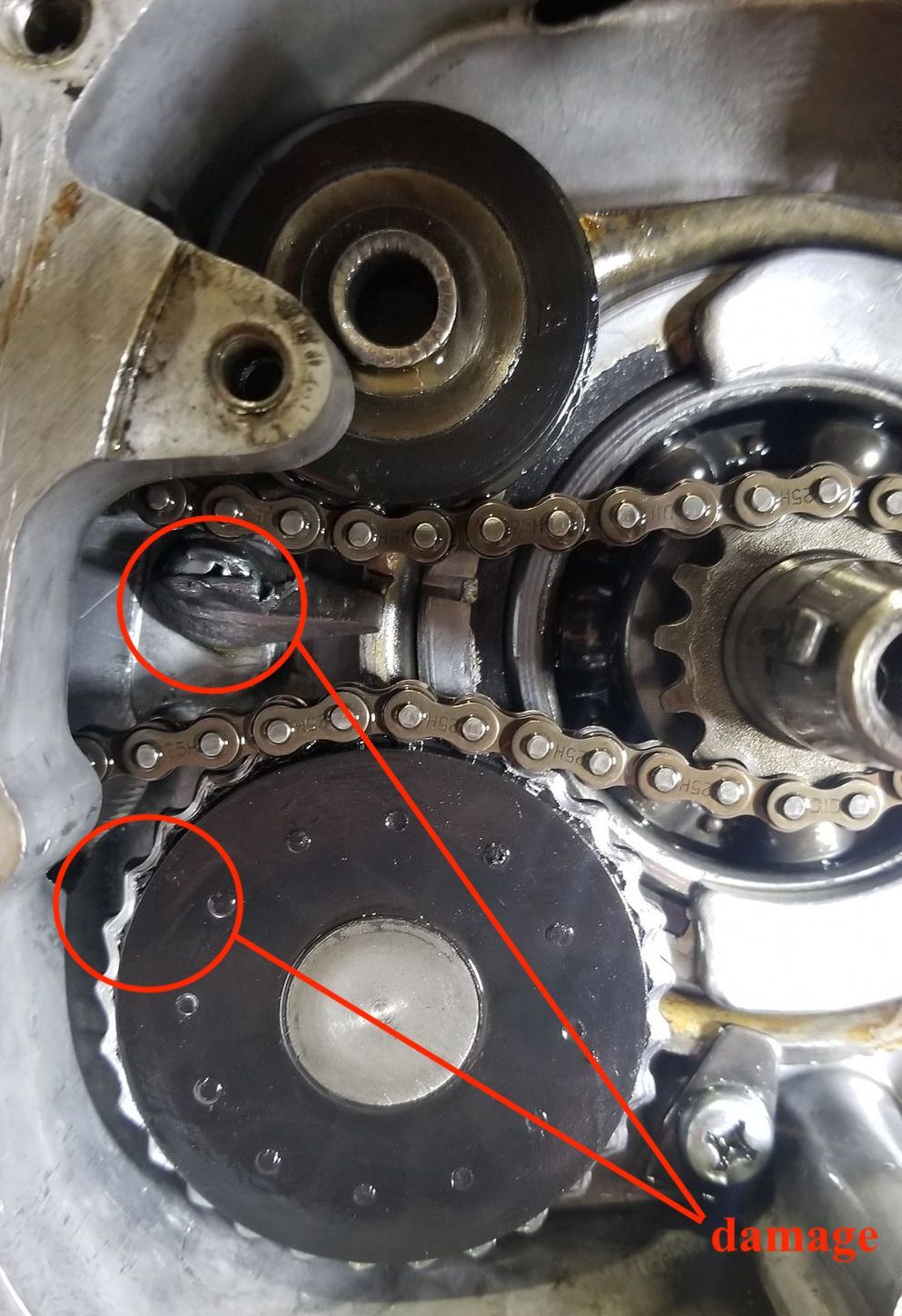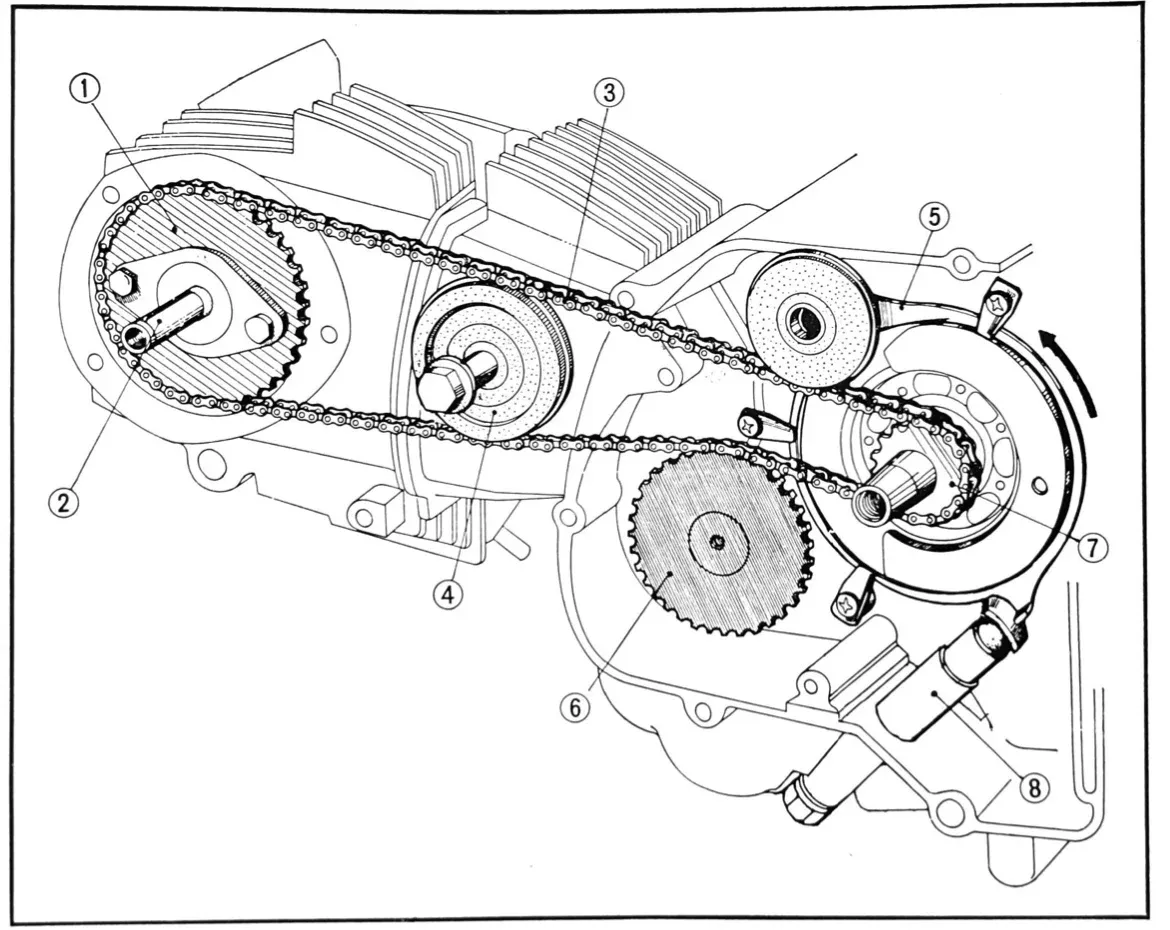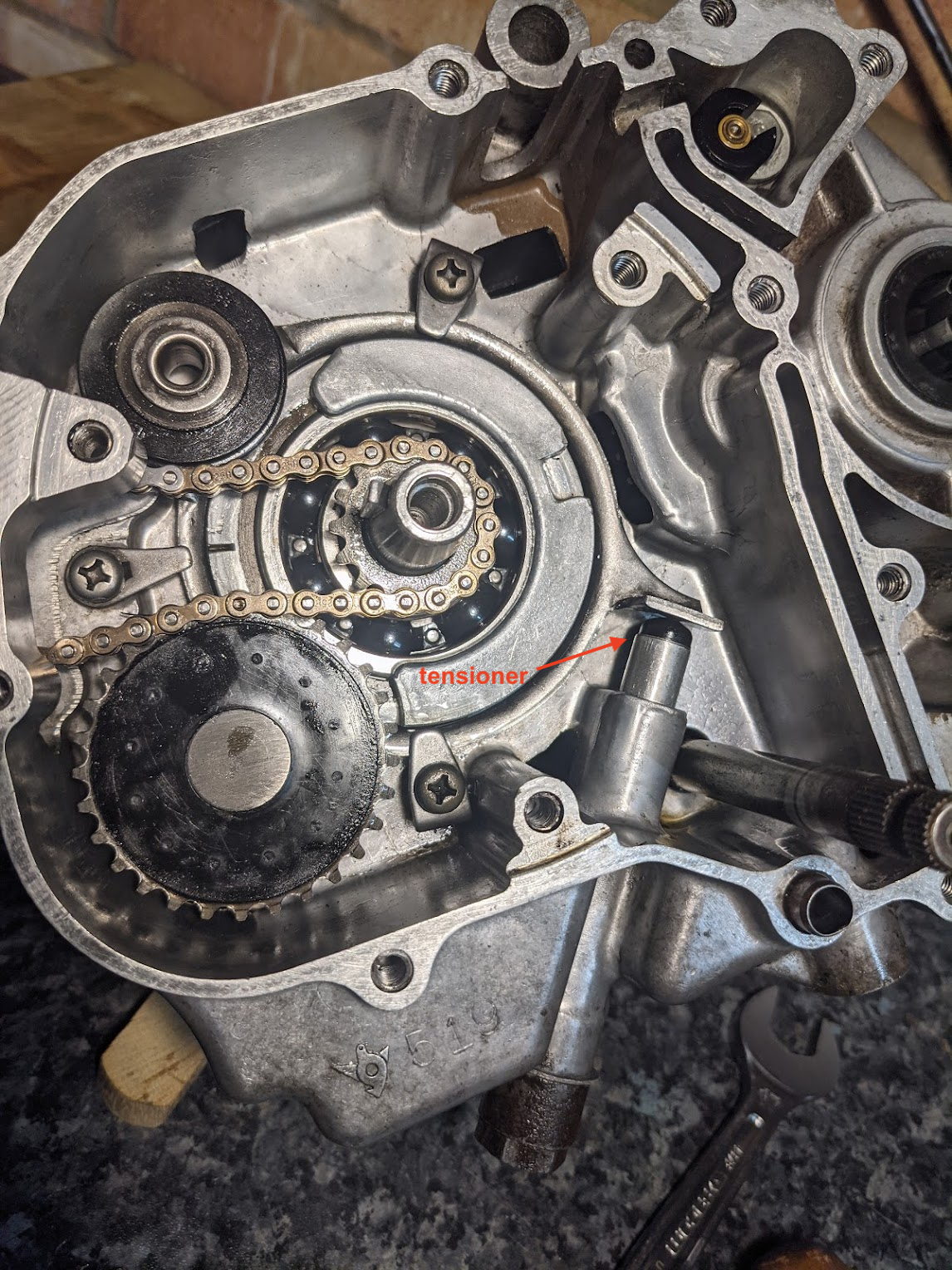Given that the cam chain is one of the components that determines cam to crank timing thereby preventing your piston and valves from colliding they get very little attention in the Honda workshop manuals.
Cam chain stretch
Although I was aware that chains 'stretch' with use, I confess I had a vague notion that this meant stretch as in elastic, rather than stretch as in elongate. What really happens is that over time material wears away from the bushings and pins so that the increased clearance between the parts causes the chain to elongate.
To compensate for chain stretch all the overhead-cam super cub engines came with some form of cam chain tensioner, designed to apply enough pressure to the chain to prevent it whipping around, reducing the noise of the engine and minimising wear and tear. Honda's attempt to get the design of this part right on the cub engines covers several decades of experimentation, as we shall see in a future post.
Cam chain maintenance
How long do cam chains last? We are no doubt all familiar with people who cheerfully ride around on motorbikes without changing their drive chain for tens of thousands of miles, indeed some of us may well have done the same ourselves. In comparison cam chains have a comparatively rarified life, not being exposed to water and dirt and being continuously bathed in oil rather than relying on hapless owners to remember to lubricate them. So it's not unreasonable to think they might be good for a long time.
Running the engine with insufficient tension on the chain can be problematic of course, as the chain can whip around inside the case. Here is an example of the telltale wear in a 6v C90:


The photograph (left) shows that the the tensioner holding screw - shown in the diagram on the right between the cam chain drive sprocket (6) and the tensioner guide (5) - has been almost completely worn away by the loose chain. The teeth on the oil chain drive sprocket are also very worn, presumably because a loose chain can jump the teeth (this is far from ideal, since this sprocket drives the oil pump...)
Needless to say in the unlikely event that a chain fails entirely while under load the resulting damage will generally be catastrophic.
service limits
Honda don't specify service limits, at least for our little singles, and try as I might I could find very little information about the normal service limits for cam chains[1].
Eventually I came across this quote from a Kawasaki KLX650 shop manual:
Camshaft Chain Wear
Hold the chain taut with a force of about 49 N (5 kg, 11 lb) in some manner, and measure a 20-link length. Since the chain may wear unevenly, take measurement at several places.
Upper and Lower Camshaft Chain 20-Link Length Standard: 127.00 ~ 127.36 mm
Service Limit: 128.9 mm
So based on this rather limited sample of one manual, if the length of a cam chain increases by more than 1.5% it should be replaced.
The chain in the c90z2 is approx 540 mm long so on this basis it could grow a wapping 8mm and still be in spec. It is therefore perhaps not a coincidence that the amount of adjustment available via the tensioner on a new chain for this engine is slightly larger than that (around 10mm)


with a brand new chain there is just under 10mm of adjustment available using the tensioner. The image on the right is the original chain (~8000 miles) with about half of this gap already used up.
Cam chain wear and timing
Assuming you persist with a chain until it is at the end of its service life what does this do to the cam to crank timing? The tensioner will cause the cam sprocket to rotate clockwise towards the crank to take up the slack and, because the engine runs anticlockwise viewed from the cam chain side, this will retard the timing (which is to say, the intake valve and exhaust valves will open later).
By how much will the timing be retarded? I hear you cry. The 30 tooth camshaft sprocket in the 89cc z2 engine has a diameter of 60mm so - if I have done the maths right - each tooth occupies 6.3mm, and on an end-of-life chain the timing will be out by just over one tooth. I think.
For reasons I (still) fail to understand, retarding the cam to crank timing tends to improve power at higher rpm’s so, on paper at least, your c90 is being tuned for top end performance as the cam chain wears out. In this type of engine there will also be a corresponding impact on ignition timing, since the contact breaker points are driven by the cam shaft, however this can be adjusted for when doing the periodic maintenance required on the contact breaker points.
Note that many older c90 models were installed with a manual cam chain tensioner. If you aren't keeping on top of the regular adjustments that these tensioners require this can contribute to erratic timing: the tensioner will not take up the slack as the chain stretches and the loose chain will not keep the camshaft in the correct position relative to the crankshaft. Inaccurate ignition timing can contribute to engine overheating, in addition to the mechanical problems that a loose chain can cause, so it is important to remember to adjust your cam chain tensioner according to the maintenance schedule.
Jumping a tooth
Some people report poorly maintained chains jumping a tooth on either the cam or crank sprocket, and with a bit of imagination you can visualise the chain being so loose that it bunches up and disengages with one tooth on the sprocket and then is picked up by a different one, perhaps because the tensioner had failed or, as result of some other mechanical failure, like wear on the oil pump drive wheel that cause there to be much more slack in the system than under normal conditions.
Adjustment
the tension on the cam chain needs to be adjusted periodically - you can read about the process here
Replacement
Based on the limited amount of adjustment available on the tensioner for the 89cc engine hopefully you'll run out of adjustment long before this is a serious risk, and when you do that would be your cue to fit a new chain. Genuine DID replacements are around £20.


(left) DID cam chain 25H/86 links, available from David Silvers. (right) Honda dealers in the US had a short lived dalliance with another vendor - better safe than sorry and use the genuine Daido (DID) version
References
1⏎ The only information I could find from DID-Daido, who manufacture Honda's C90 cam chains, relates to power transmission chains. This gives a limit of 2% for chains used on small sprockets
